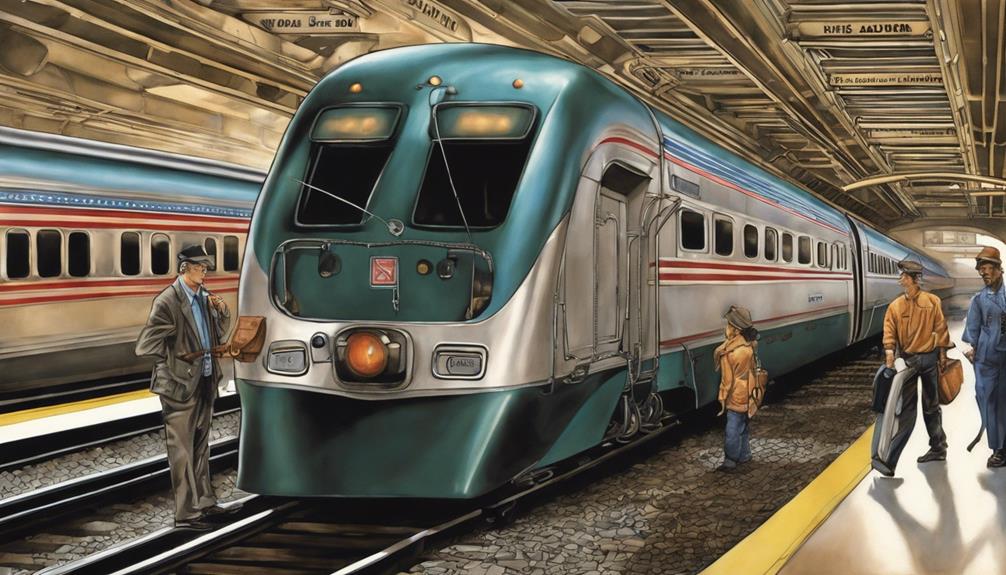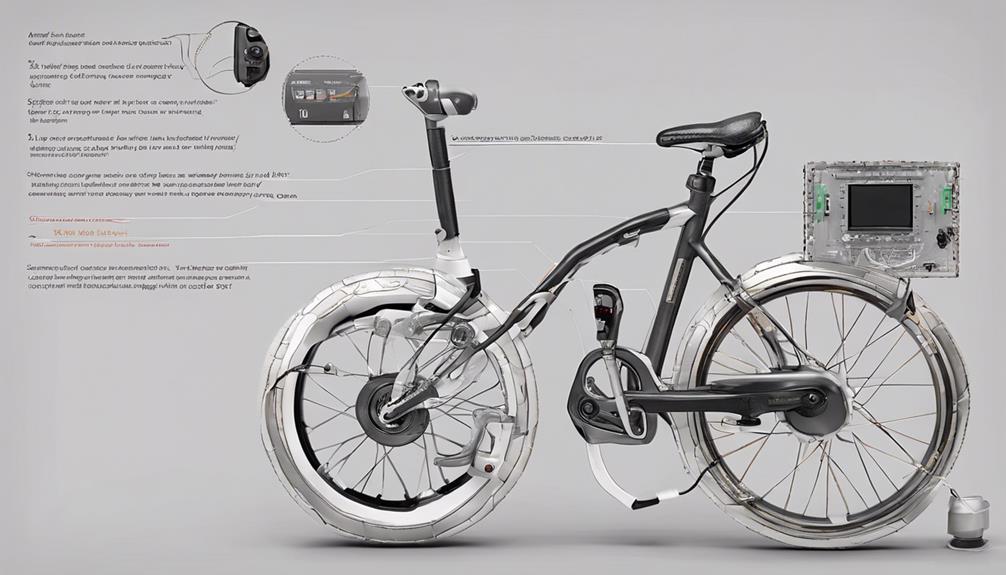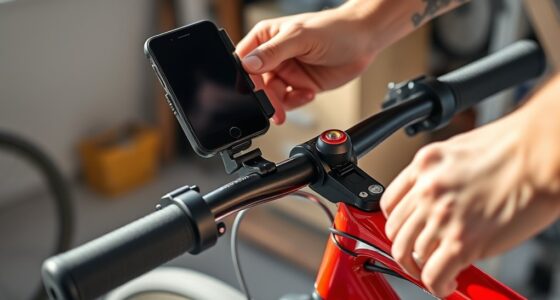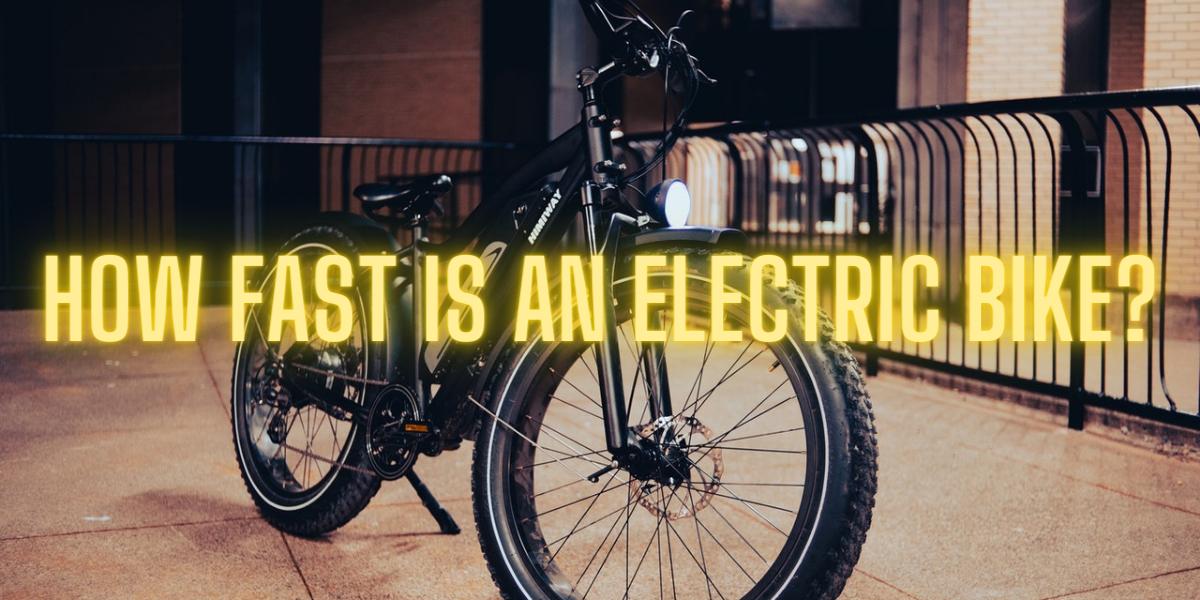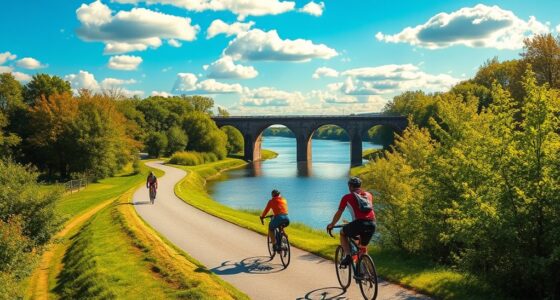Have you ever wondered if traveling with your bicycle on Amtrak is a feasible option for your next journey? Well, let's explore the ins and outs of this convenient transportation method for cyclists.
From navigating size restrictions to understanding reservation protocols, there are key considerations to keep in mind. By following a few essential tips, you can ensure a seamless experience traveling with your bike on Amtrak.
So, let's delve into the details and make your next cycling adventure a smooth ride from start to finish.
Key Takeaways
- Book your Amtrak ticket early with a bike reservation for guaranteed space.
- Pack and prepare your bike in the Amtrak bicycle box following guidelines.
- Understand Amtrak bike policies, including limits and accessory removal.
- Navigate stations by locating bike-friendly cars, seeking assistance, and following loading instructions.
Booking Your Amtrak Ticket
When traveling with your bicycle on Amtrak, the first step is to book your ticket, including a reservation for your bike. Making an advance reservation ensures that there's space available for your bicycle on the train.
The bicycle fee for most routes is $20, but some specific routes may have a $10 fee. It's essential to have your travel document, such as an eTicket, which should include your bike reservation.
Booking early is crucial as it guarantees that there will be room for your bicycle on the train. You can make reservations online, through the app, at a kiosk, over the phone, or in person. Remember that different routes may have varying fees, so it's important to check the specific details for your journey.
Packing Your Bicycle Properly

To pack your bicycle properly for travel on Amtrak, utilize an Amtrak bicycle box for secure transportation. When preparing your bike for the journey, consider the following packing guidelines:
- Partial Disassembly: To ensure your bicycle fits snugly inside the box, partially disassemble it by removing the wheels, pedals, and handlebars. This will help prevent any damage during transit.
- Proper Identification: Attach a tag with your name and address to the box. This will help you identify your bicycle easily upon arrival and prevent any mix-ups with other passengers' bikes.
- Early Check-in: Make sure to check your bicycle at least an hour before your scheduled departure. This allows ample time for the staff to safely stow your bike and ensures a smooth boarding process.
Understanding Amtrak Bike Policies

As travelers prepare to board an Amtrak train with their bicycles, understanding the specific bike policies in place is paramount for a smooth and hassle-free journey. When it comes to Amtrak's bike policies, passengers can bring standard size bicycles for carry-on service, with each person limited to one bike. However, certain accessories must be removed before securing the bike on designated bike racks. Electric bikes and folding scooters are accepted under specific conditions, making Amtrak quite bike-friendly. It's essential to arrive at least 30 minutes before departure to ensure proper handling of the bike by Amtrak crew members. For checked bicycles, passengers should follow loading instructions provided by the crew. Remember, for electric bikes and folding bicycles, extra care may be needed. Below is a table summarizing key points of Amtrak's bike policies:
| Topic | Description | Additional Information |
|---|---|---|
| Carry-on Bike | Standard size bikes allowed | One bike per passenger |
| Designated Racks | Remove certain accessories before loading | Electric bikes and folding scooters accepted |
| Loading Instructions | Arrive 30 minutes early | Follow crew member guidance |
Navigating Amtrak Stations With Your Bike

Upon entering an Amtrak station with your bike, keep an eye out for the Bike Friendly sticker to easily spot designated train cars for convenient bike storage. When navigating Amtrak stations with your bike, here are some essential tips to ensure a smooth experience:
- Seek Assistance from Amtrak Conductors: If you're unsure about where to board with your bike, don't hesitate to ask Amtrak conductors for guidance.
- Utilize Loading Instructions: Pay attention to loading instructions in the designated bike rack area to efficiently secure your bike before the journey.
- Lift Your Bike to Shoulder Height: Be prepared to lift your bike to shoulder height for loading into the designated racks, ensuring it's securely stored for the trip.
Tips for a Smooth Bike-Friendly Journey

Embark on a seamless bike-friendly journey by following these essential tips for hassle-free travel with your bicycle on Amtrak. To ensure a smooth journey, make sure to arrive at least 30 minutes before departure time.
Look out for the Bike Friendly sticker to locate designated train cars with bike racks inside. When loading your bike, be ready to lift it to shoulder height for placement in the racks and follow the loading instructions provided in the bike storage area.
If you need assistance, don't hesitate to ask the Amtrak crew members who are there to help with loading and securing your bike. Remember to pack efficiently, utilizing handlebar bags for easy access to your essentials during the trip.
Frequently Asked Questions
What Is the Rule for Bikes on Trains?
Bikes on trains must adhere to specific rules. Most Amtrak services allow bicycles for an extra fee. Standard bikes are carry-on. One bike per passenger. Electric bikes and folding scooters have tailored guidelines. Store bikes in designated areas.
How Do You Board a Train With a Bike?
When boarding a train with a bike, we arrive early, locate the Bike Friendly cars, lift our bikes, and follow loading instructions. Amtrak crew members help secure bikes in designated racks, ensuring a smooth travel experience.
Does Amtrak Charge for Bikes?
Yes, Amtrak charges for bikes. The fee is typically $20 for most routes, but some may cost $10. This ensures space for your bike on the train. Reservations can be made online, via app, kiosk, phone, or in person.
How Do You Take a Bike on a Train?
We handle taking a bike on a train by checking the guidelines for bike size and arrival time, then we secure it in designated areas. One bike per passenger is allowed, and electric bikes or folding scooters have specific rules.
Conclusion
In conclusion, traveling with your bicycle on Amtrak is like embarking on a two-wheeled adventure through the rails.
By following the rules and guidelines, you can pedal your way to a seamless and enjoyable journey.
So, pack your bags, fold up your bike, and hop on board for a ride that's sure to be a wheely good time!
